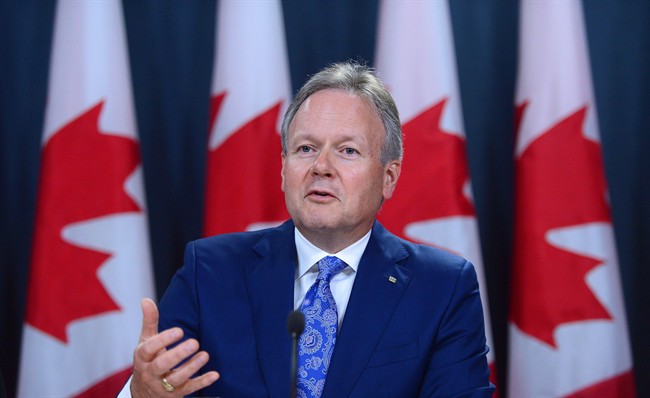The Bank of Canada raised its key interest rate by another quarter of a percentage point, up to 1 per cent from 0.75 per cent, on Wednesday. The decision, which follows a first hike in July, could be just the second in a string of rate increases to come, some economists predicted in light of the announcement.

READ MORE: Canadian dollar soars, briefly touches 2-year high after rate hike
The Bank’s two rate hikes this summer erase the two cuts it implemented in 2015 in response to the oil-price shock.
“Recent economic data have been stronger than expected, supporting the Bank’s view that growth in Canada is becoming more broadly-based and self-sustaining,” the central bank noted in a statement.
Recent data from Statistics Canada revealed the economy expanded at an annualized rate of 4.5 per cent in the April to June period, far above economists’ consensus forecast of 3.7 per cent.
READ MORE: Canadian economy smashes expectations with 4.5 per cent growth
Lower interest rates generally stimulate economic activity, by making it cheaper for firms and consumers to borrow.
Higher interest rates usually have a cooling effect on growth, helping to keep inflation in check.
When the Bank first raised rates from 0.5 per cent to 0.75 per cent in mid-July, all of Canada’s big banks followed its lead, also raising their prime lending rates by a quarter of a percentage point, up from 2.7 per cent to 2.95 per cent. Prime rates are the basis for products like variable-rate mortgages and home equity lines of credit.
WATCH: How will homeowners be affected by a higher interest rate?

Looking ahead, the bank insisted future rate decisions will not be “predetermined” and will be guided by upcoming economic data releases and financial market developments. It pledged to pay particular attention to the economy’s potential, job-market conditions and any potential risks for Canadians from the higher costs of borrowing.
“Given elevated household indebtedness, close attention will be paid to the sensitivity of the economy to higher interest rates,” the statement said.
READ MORE: Mortgage calculator: See how rising interest rates affect your payments
Even with the recent economic improvements, the bank still underlined concerns around geopolitical risks and uncertainties related to international trade and fiscal policies.
The Bank predicted the pace of growth to moderate in the second half of the year.
Still, “absent a significant shock, today’s rate increase will be part of a larger and longer march towards interest rate normalization,” TD economist Brian DePratto wrote in a note to clients.
Andrew Grantham of CIBC also indicated that more hikes appear likely.
The rate hike Wednesday seemed to come as a bit of a surprise for some experts. Most of the big banks had been expecting governor Stephen Poloz to wait until October before introducing the second increase.
WATCH: What is an interest rate?

Following a quiet August for bank officials, some believed the bank would hold off because it hadn’t clearly telegraphed a September hike. Others predicted the bank would refrain from moving the rate out of concern such this would drive up an already strengthening Canadian dollar and pose a risk to exporters.
READ MORE: What you need to know about mortgages if interest rates rise
In its statement, the bank also said headline and core inflation have seen slight increases since July, largely as expected. It noted, however, that upward pressure on wages and prices remain more subdued than historical trends would suggest, which has also been seen in other advanced economies.
– With files from the Canadian Press
- Inflation ticked higher in March. Are Bank of Canada rate cuts still in the cards?
- Some fixed mortgage rates are up despite hints of Bank of Canada cuts. Why?
- Freeland set to table 2024 federal budget in the House of Commons
- Lynx Air says passenger refunds will hurt investors because of defiant contractor




Comments